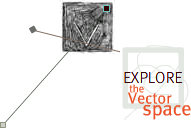
The images and sounds that pervade our world, indeed the excited electrons that illuminate this screen are, by definition, evanescent — we perceive and make meaning from them in fractions of a second before they flicker, fade or are replaced. Likewise the computer you are now using will one day crash or become obsolete, perhaps taking its prodigious memory with it, an eventuality that suggests the alarming impermanence of digital media while it hints mischievously at our own mortality. There is very little in today's culture — except perhaps for the copyright of Disney characters — that can be counted on to survive the 21st century. Indeed, those of us who study the artifacts and stories of cultural and artistic production may be in the midst of a new dark age, inundated with such a profusion of information that we can never hope to organize or digest it, much less sensibly preserve it for the future.
But there is something more at stake here than the planned obsolescence of the technology industries. The environmental destruction and increasing toxicity of our planet during the past half-century is symptomatic of a seeming inability to look beyond the next quarter's profit-loss reports. It is this tendency toward short-sightedness that prompts The Long Now Foundation to carry the year out to five numerical places (e.g., 02006), a subtle reminder of our own decidedly transient role in the history of this planet. Do we dare take comfort in the notion (mixing equal parts Nietzsche and Andy Warhol) that our fifteen minutes of "world history" are nearly up? Since the previous issue of Vectors launched, the average age of justices on the U.S. Supreme Court dropped from 72 to 66. All indications suggest that the Roberts court, like the current administration's "war on terror," will be with us for a very long time. Many of the beliefs that once seemed most deeply etched in our national psyche — ideologies of freedom and privacy, for example — may be the very things that must be asserted most vigorously in the decades to come.
This issue of Vectors is not intended as a celebration of ephemerality, but rather a gesture of respect for the fleeting nature of the present and the material consequences of the past. Historical investigations, as Carlo Ginzburg argues, are sometimes most productive when they look for meaning in the least likely places. Each of the projects in this issue attempts to take seriously the significance of cultural artifacts that would otherwise be forgotten or overwhelmed by more official documents and discourses of history. The voices that reach us via things that were meant to be forgotten may in fact speak most eloquently to the imperatives and contradictions of our present historical moment. It is with equal degrees of irony and hopefulness that we present these works of excavation, rumination and preservation in a form that will soon confront its own likely disappearance.


 Ephemera Issue Projects
Ephemera Issue Projects
